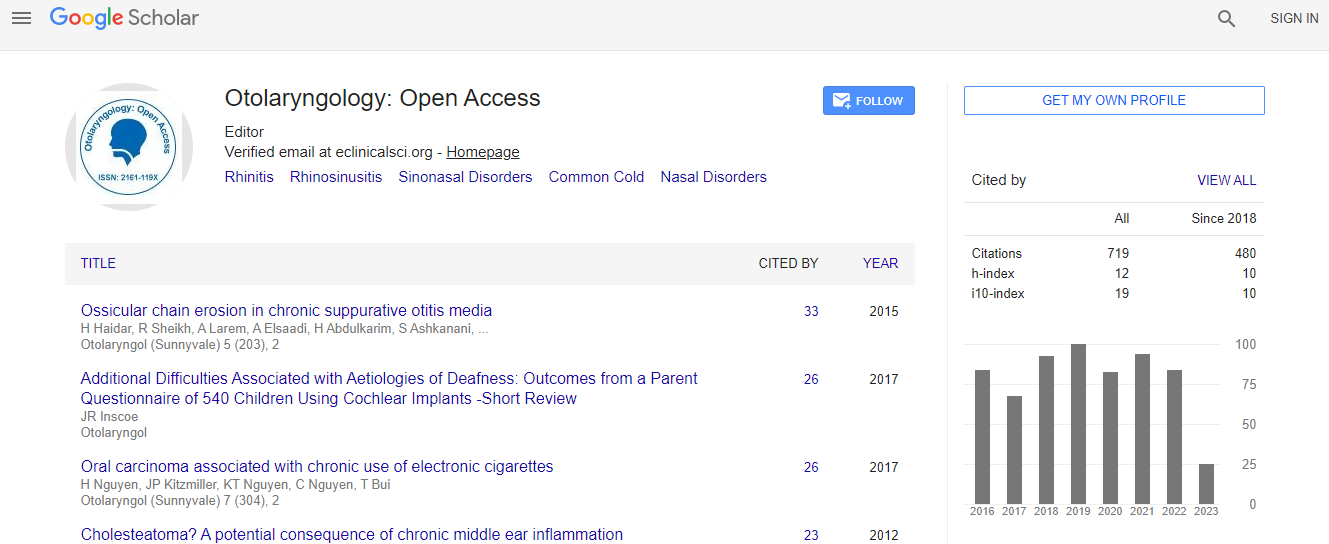Effect of Preoperative Hypothyroidism on Pharyngocutaneous Fistula Formation Following Total Laryngectomy
*Corresponding Author:
Copyright: © 2020 . This is an open-access article distributed under the terms of the Creative Commons Attribution License, which permits unrestricted use, distribution, and reproduction in any medium, provided the original author and source are credited.
Abstract
To compare the effects of preoperative hypothyroidism on postoperative pharyngocutaneous fistula (PCF) formation in patients undergoing total laryngectomy. Study Design: Case series with chart review. Setting: University-based, tertiary care hospitals. Patients and Methods: We retrospectively analyzed 49 consecutive patients undergoing total laryngectomy between January 2003 and December 2007 having perioperative thyroid stimulating hormone (TSH) levels. We defined hypothyroidism according to American College of Clinical Endocrinology guidelines as serum TSH level above 4.5 mIU/mL. Patients were divided into 2 groups: Group I, comprised of hypothyroid patients and Group II, comprised of euthyroid patients. We collected demographic, clinical, laboratory and perioperative data for analysis. Results: Group I had 10 patients (20%). Group II was matched in nearly all clinical and perioperative variables. Overall, 18 patients (37%) had postoperative PCF. Only 4 of these patients (40%) were from Group I compared to 14 patients (36%) from Group II (p=1.000). Thirteen patients (27%) underwent a concurrent thyroidectomy; 2 from Group I and 11 from Group II. PCF formation was not related to concurrent thyroidectomy (p=0.508). None of the other clinical variables studied (TNM stage, alcohol and tobacco use, preoperative albumin and hemoglobin level, prior radiotherapy, diabetes, neogullet closure type) were associated with PCF formation. Conclusions: PCF formation is multifactorial and our data suggest that PCF is not singularly associated with perioperative hypothyroidism as defined by current standards. A greater degree of hypothyroidism may be required to affect PCF formation. Total laryngectomy should not be delayed secondary to moderately elevated pre-operative TSH values.

 Spanish
Spanish  Chinese
Chinese  Russian
Russian  German
German  French
French  Japanese
Japanese  Portuguese
Portuguese  Hindi
Hindi 
